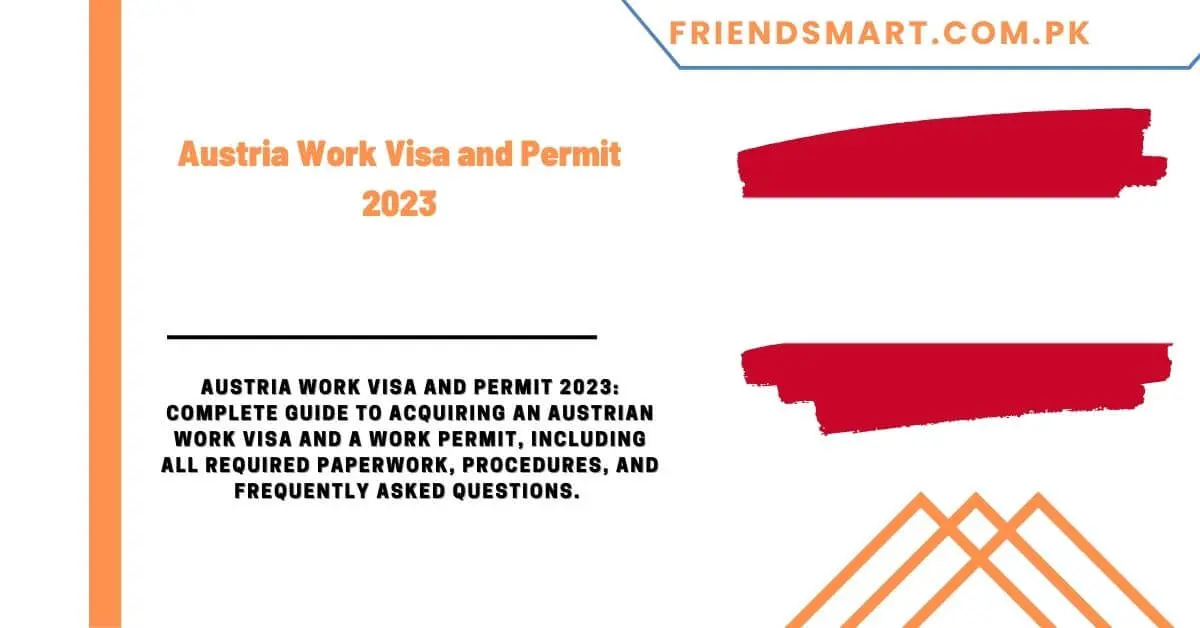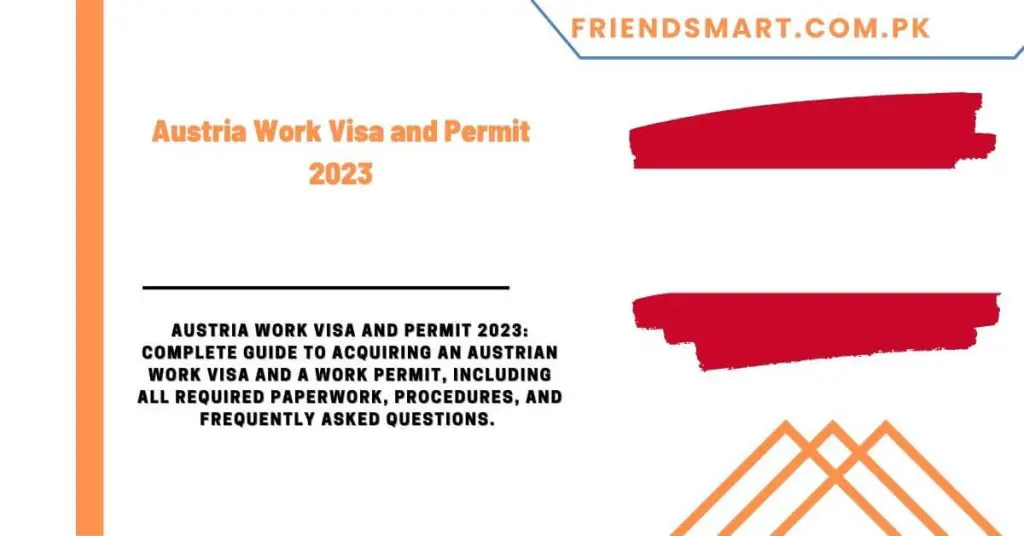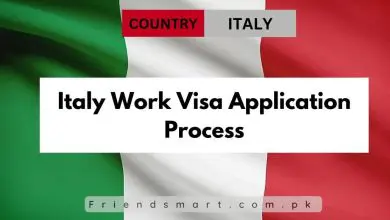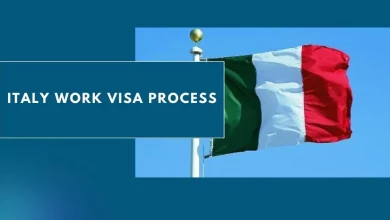Austria Work Visa and Permit 2023

Austria Work Visa and Permit 2023: Complete guide to acquiring an Austrian work visa and a work permit, including all required paperwork, procedures, and frequently asked questions.
Austria is one of Europe’s most economically developed countries. As a result, it offers its employees a variety of options to work and flourish. Great working conditions, benefits, and high incomes entice international nationals to relocate to Austria for work.
Read More: How to Get Internships for College Students in USA 2023
However, the majority of people are required to have both an Austrian work permit and a visa in order to do so. The period of an Austrian work visa and its employment mobility vary. A Red-White-Red Card is the most frequent type of work visa in Austria.
You’ll find information below on who is eligible for a work permit in Austria, what types of work visas are available, and how to apply for one.
Do I Need a Visa to Work in Austria?
You certainly do. To work in Austria, you must first obtain a work permit. Residents of the EU or EEA are the sole exceptions to this provision.
Citizens from the EU/EEA nations, on the other hand, are only permitted to reside and work in Austria for up to 90 days before applying for a certificate of registration in order to extend their stay.

What Is a Red-White-Red Card?
A Red-White-Red Card is a work and residency card that permits its possessor to stay and work in Austria for up to two years. This sort of visa is not available to everyone because it is only granted to highly talented persons from other countries who seek to work in Austria.
This permit’s qualifying conditions are scored using a point system. Personal qualities such as language skills, professional achievements, age, and work experience are all assessed appropriately inside the framework.
If you fall into any of the following categories, you will be eligible for a Red-White-Red Card:
- Very highly qualified workers.
- Skilled workers in shortage occupations.
- Other key workers.
- Graduates of universities and colleges of higher education in Austria.
The permit is issued in the form of a card with a picture and functions as an identification card. As a result, it’s critical to maintain it on hand in case you need to establish your residency status.
Requirements for an Austria Work Visa
In addition to the regular Austria visa requirements, you’ll need the following documents for a work permit:
- Statement of the Employer. Your employer must provide you with a statement according to the Act Governing Employment of Foreign Nationals (AuslBG).
- Proof of Professional Qualifications. These include references and employment verification.
- Evidence of Language Skills. You must provide proof of German or English language skills with an internationally verified diploma.
- Research Activities. You also need to submit any research publication or declaration from a University where you worked as a researcher or at a research center.
- Patent Registration. A patent registration by an excerpt from the national/regional register of patents (if applicable).
- Proof of Last Year’s Annual Gross Salary. These include tax statements proving your salary.
- Proof of Your Previous Position. You must provide a declaration from your previous employer that you worked in a leadership position.
- Proof of Your Previous Company’s Status. You must also provide documentation that the company you worked at is listed on the stock exchange.
- Proof that You Studied In Austria. These include confirmation by means of your record of studies (Studienbuch) and relevant exam certificates.
- Proof the Habilitation. This is a postdoctoral lecturing qualification that recognizes you as a qualified individual to do research or teach within a scientific field.
- Employment Contract. You need to provide a copy of your contract from your c
How to Apply for an Austrian Work Visa?
In order to apply for a Red-White-Red Card, there are a few steps you need to follow.
- Secure a job.
- Apply for a work permit.
- Apply for a work visa.
- Travel to Austria.
Step 1: Secure a job in Austria
One must secure gainful employment in Austria prior to submitting an application for a work permit, as befits a refined and sophisticated lifestyle. Should you lack substantial proof of employment, such as a work contract, the opportunity to apply for the esteemed Red-White-Red Card visa shall not be granted to thee?
Step 2: Apply for the work permit
Once you have secured a prestigious position in Austria, you may luxuriate in the privilege of applying for a coveted work permit. One’s esteemed employer may graciously apply for the permit on their behalf at the local residence authority, or alternatively, one may opt to personally apply at a representative authority within their opulent country of residence.
Step 3: Apply for a work visa
While an Austria work permit permits you to work and reside in Austria for an extended period of time, you cannot enter the country without a D visa. Before moving to Austria, you must apply for a national D visa.
A national visa allows you to stay in Austria for up to 6 months; in this situation, the visa’s sole purpose is to allow you entry into Austria; after you have your Red-White-Red card, the visa will no longer be required.
Step 4: Travel to Austria.
Once you have obtained a work visa, you are free to fly to Austria, pick up your work permit, and begin your new life in Austria. After two years, you can apply for a Red-White-Red Card Plus, which allows you to stay in Austria for an additional two years.
Where Do I Apply for an Austria Work Visa?
To enter Austria with your national D visa, you must apply at your nearest office, either an embassy or a consulate.
You can apply for your work permit through local representation, but your employer may also apply on your behalf in Austria. You should first apply for a work permit; if you acquire one, the visa process should be significantly quicker because you’re already listed as a future employer in Austria.
How Long Does It Take to Get an Austria Work Visa?
An Austrian work visa normally takes about 8 weeks to process. By then, you should have heard from the embassy. However, keep in mind that delays might occur for a variety of reasons.
How Long Does an Austria Work Visa Last?
An Austria Work Visa is valid for two years. During this time, you can work and live in Austria as freely as any other resident. If your employment contract expires before the two years are up, your visa will be extended for the duration of your employment plus three months.
Can I Extend an Austria Work Visa?
If your work visa is due to expire, you can apply for an extension of your Red-White-Red Plus card, which allows you to stay in Austria for another two years. Furthermore, after having a Red-White-Red Plus card for two years, you can apply for another card and stay for three years.
Three months before your visa expires, you must file for an extension.
If you have lived in Austria with a work visa for 5 years, you are eligible to apply for the residence title “long-term resident-EU (Daueraufenthalt – EU)”. Your residency permit must also be renewed.
*Please keep in mind that in order to be eligible for an extension, you must also complete Module 1 of the integration agreement. Module 1 completion indicates that you have a basic understanding of the German language according to the Common European Framework of Reference for Languages (CEFR).
Can I Switch Employers With an Austria Work Visa?
With an Austria Work Visa, you cannot change jobs. A Red-White-Red permit is only provided to a single employer. If you want to work for someone else, you must reapply for your work visa.



